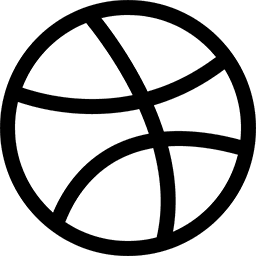The global Victoria Blue BO market was valued at approximately USD 57 million in 2024 and is projected to reach USD 82 million by 2032, reflecting a steady compound annual growth rate (CAGR) of 4.6%. This trajectory underscores a growing reliance on high-performance synthetic dyes across multiple industries, including textiles, printing, biological staining, and plastics. As technological innovations reshape the dye manufacturing landscape, Victoria Blue BO is emerging as a standout product for its stability, vivid hue, and compatibility with eco-friendly formulations.
Read More: https://www.24chemicalresearch.com/reports/292452/global-victoria-blue-bo-market-2025-2032-545
Expanding Applications Driving Market Growth
Surging Demand in Textile and Industrial Sectors
Victoria Blue BO, a synthetic triarylmethane dye, continues to gain traction in textile applications thanks to its high tinctorial strength and brilliant blue hue. The dye is commonly used on cotton, wool, silk, and synthetic blends, offering excellent colorfastness under light and heat. Industrial applications also contribute significantly, with usage in paper coatings, leather processing, and ink production. This growing range of end-uses is propelling overall market demand.
Emergence of Specialty Uses
Beyond traditional sectors, Victoria Blue BO is being explored in niche segments such as biological staining and photodynamic therapy. Its selective staining properties have made it an essential tool in microscopy and diagnostic labs, creating new revenue channels for manufacturers focusing on healthcare and biosciences.
Key Market Trends and Dynamics
Eco-Conscious Manufacturing on the Rise
Stringent environmental regulations and increasing consumer preference for sustainable products are pushing manufacturers to reformulate Victoria Blue BO with lower toxicity and improved biodegradability. Green chemistry is no longer a trend—it’s a market requirement. Companies are investing in cleaner synthesis methods and renewable raw materials, enhancing the environmental profile of their product lines.
Technology-Driven Product Innovations
R&D departments are innovating to meet changing performance demands. Improvements in solubility, thermal stability, and UV resistance are allowing Victoria Blue BO to be used in more advanced industrial and outdoor applications. Dye granulation techniques, microencapsulation, and polymer-binding are just a few innovations boosting dye performance and expanding market potential.
Regional Market Insights: Where Growth Is Accelerating
Asia-Pacific: The Powerhouse of Dye Production
Asia-Pacific dominates the Victoria Blue BO market in terms of production and consumption. The region’s vast textile industry, particularly in countries like China, India, and Bangladesh, ensures a strong baseline demand. Rapid industrialization and supportive regulatory frameworks are further enhancing manufacturing capacities in the region.
Middle East and Africa: Emerging Yet Promising
While still a smaller segment of the global market, the Middle East and Africa are experiencing steady growth, driven by modernization in textile manufacturing and the gradual adoption of high-performance dyes. Local dye producers are aligning their processes with international environmental standards, helping the region integrate more fully into the global value chain.
Read More: https://www.24chemicalresearch.com/reports/292452/global-victoria-blue-bo-market-2025-2032-545
Market Players Fueling Innovation
Market participants are responding to evolving demands through strategic investments and partnerships. Leading dye manufacturers are:
- Expanding production capacities to meet global volume requirements.
- Developing eco-friendly formulations to comply with global sustainability standards.
- Collaborating with research institutions to unlock new applications in diagnostics, cosmetics, and specialty coatings.
These strategic moves are enhancing product differentiation and ensuring long-term competitiveness in a moderately fragmented market landscape.
Challenges to Watch
Despite promising growth, the Victoria Blue BO market faces notable challenges:
- Regulatory Compliance: Strict environmental regulations require significant investment in compliance and R&D.
- Price Volatility: Fluctuations in raw material prices can affect production costs and pricing strategies.
- Alternatives and Substitutes: Growing demand for natural and organic dyes could shift some market share away from synthetic options.
Manufacturers that proactively invest in sustainable innovation and maintain cost efficiency will be best positioned to overcome these challenges.
Future Outlook: What Lies Ahead (2025–2032)
The Victoria Blue BO market is projected to maintain robust growth, driven by:
- Technological advancements in dye chemistry.
- Rising global textile production and exports.
- Adoption of environmentally sustainable manufacturing practices.
- Expansion into emerging applications such as bio-imaging and advanced polymers
Read More: https://www.24chemicalresearch.com/reports/292452/global-victoria-blue-bo-market-2025-2032-545
- Bleached Absorbent Cotton Market Analysis 2024–2032: Declining Trends and Industry Insights - June 5, 2025
- Industrial Chromic Anhydride Market Report 2024–2032: Insights, Trends, and Growth Prospects - June 5, 2025
- Recycled Wood Plastic Composites Market Report 2024–2032: Trends, Innovations, and Growth Insights - June 5, 2025






ethanol burner stainless steel